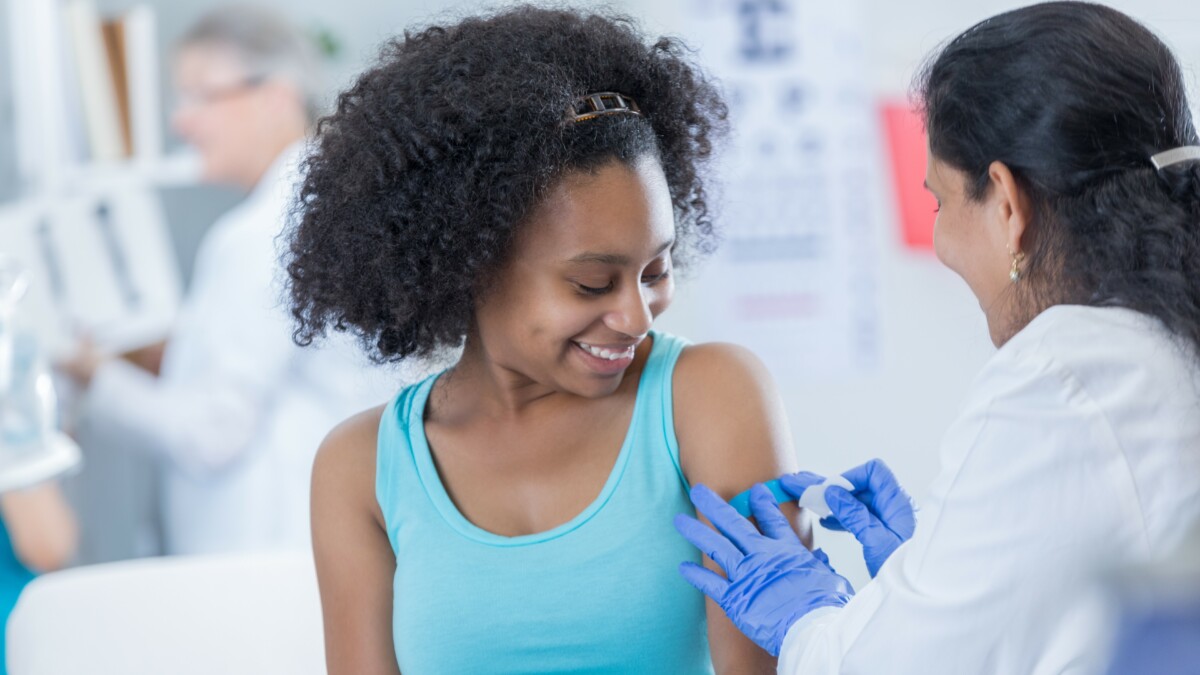What is HPV?
Human Papilloma Virus (HPV) is a family of double-stranded deoxyribonucleic acid (DNA) viruses that infect different parts of the human body[1]. HPV is the most common sexually transmitted infection worldwide[2]. Transmission occurs through sexual intercourse, genital skin-to-skin contact and oral sex.[3]
The Burden of HPV-Related Diseases
HPV infections are often asymptomatic, so it is difficult for a person to know whether they are infected.1 Although most HPV infections can resolve on their own within 1-2 years, some serotypes can cause long-lasting infections that can result in various types of cancers.1,2 HPV is responsible for almost all cervical cancer cases.4 Cervical cancer is the fourth most frequent cancer in women worldwide, with approximately 604 000 new cases and 342 000 deaths in 2020.[4] HPV is also associated with other diseases such as genital warts, anal cancer, oropharyngeal cancer, and respiratory papillomatosis.1 HPV is responsible for 90% of all genital warts and anal cancer and roughly 70-80% of oropharyngeal cancers.1,[5]There is no cure for an HPV infection; however, there are treatments for the disease they cause.3

Role of the Pharmacist
Pharmacists are familiar with the vaccination guidelines, coverage, and availability. In addition, pharmacists’ scope of practice includes providing HPV vaccination. When reviewing medications, there is an opportunity to assess patients’ eligibility for the HPV vaccine and offer education on the importance of vaccination for disease prevention.
Low-risk vs High-risk HPV Strains
There are over 200 types of HPVs. Low-risk strains are responsible for milder disease forms such as genital warts, while high-risk strains are associated with neoplastic disease.1 The most common low-risk strains include HPV6 and HPV11, which are responsible for 90% of genital wart cases.1 The HPV types that are considered carcinogenic include HPVs 16, 18, 31, 33, 35, 39, 45, 51, 52, 56, 58, 59. HPV 16 and 18 are considered highly carcinogenic and are responsible for 70% of cervical cancers.3,[6]
Incidence in Canada
HPV affects approximately 3 out of 4 sexually active Canadians at least once in their lifetime.3 Approximately 550 000 Canadians are infected each year.2
In 2022, it is estimated that:
At-risk populations
Populations that are at higher risk for HPV infections include those with early onset sexual activity (under 18 years), multiple sexual partners, history of sexually transmitted infections, history of vulvar or vaginal cancer, and immunocompromising conditions (e.g. HIV).1

Pharmacologic Prevention Measures
Although HPV vaccination does not treat HPV-related disease, it does help protect against their development. The vaccine is most effective when given prior to possible HPV exposure, which is before a person becomes sexually active.3 It is beneficial for both the male and female population as it prevents several forms of cancer and genital warts.3,[11]. In a meta-analysis done by Drolet et al, in women ages 15-19 years, vaccination decreased the prevalence of HPV16/18 by 83%, genital warts by 67% and cervical intraepithelial neoplasia grade 2 rates by 51%.[12] In men ages 15-19 years old, the rate of anogenital warts decreased significantly by 48%.12 In a retrospective cohort study of women vaccinated by Ontario’s school-based HPV immunization program, the vaccinated group had lower incidence of high-grade dysplasia, low-grade dysplasia and need for the treatment of genital warts.[13] In Canada, a 3-dose series of an HPV vaccine is recommended for males and females 9-26 years.[14]. The vaccine is also safe for females aged 26-45 years old; however, vaccination in this population should be decided based on individual factors. Those aged 26-45 that would benefit the most from vaccination include those with no prior sexual experience, a limited number of sexual partners, or for whom the risk of prior HPV infection is low.11
In Canada, two types of HPV vaccines are available, Cervarix and Gardasil 9.
- Cervarix – a bivalent HPV vaccine that protects against HPV types 16 and 18. Cervarix can be administered as a 2-dose (0 and 6 months) or 3-dose series (0, 1 and 6 months). For people 15-45 years old, the 3-dose schedule is recommended.[15]
- Gardasil 9 – a nonvalent HPV vaccine that protects against HPV types 6, 11, 16, 18, 31, 33, 45, 52 and 58. Gardasil is administered in a 3-dose series at 0, 2 and 6 months.[16]
Note: in 2019, the quadrivalent Gardasil HPV vaccine that protected against HPV types 6 , 11 , 16 , 18, was taken off the market.[17]
HPV vaccines are generally well-tolerated. Side effects include syncope (higher in adolescents), fever, headache, pain at injection site and local redness. HPV vaccines are generally not recommended in pregnancy due to a lack of clinical safety data. Ideally, the three-dose series should be completed prior to conception but may be completed post-pregnancy if needed. Although only a small portion of nursing women were included in the clinical trials, no adverse events occurred in the infants of breastfeeding mothers at the time of vaccination.17
Non-Pharmacological Prevention Measures
The use of barrier methods such as condoms reduces the transmission of HPV during sexual intercourse but does not eliminate it. This is because condoms and oral dams do not cover all genital skin contact points during intercourse, leaving the exposed skin susceptible to viral transmission. Nevertheless, it is still important to use barrier methods during sexual intercourse to reduce the likelihood of transmission of HPV and other sexually transmitted infections.[18]
This blog post is a part of the Eliminating HPV-Related Cancers signature learning series developed by OPA and supported through an education partnership with Merck.
References
[1] Palefsky J. Human papillomavirus infections: Epidemiology and disease associations. Hirsch M, Bogorodskaya M (Eds), UpToDate. Waltham, MA: 2021 [Accessed 2022 Aug 12]. Available from: www.uptodate.com
[2] Bird Y, Obidiya O, Mahmood R, Nwankwo C, Moraros J. Human Papillomavirus Vaccination Uptake in Canada: A Systematic Review and Meta-analysis. Int J Prev Med. 2017;8:71. doi:10.4103/ijpvm.IJPVM_49_17
[3] Canadian Cancer Society. Human Papillomavirus.[Accessed 09 Aug 2022]. Available from: https://cancer.ca/en/cancer-information/reduce-your-risk/get-vaccinated/human-papillomavirus-hpv
[4] World Health Organization. Cervical Cancer. Feb 22 2021 [Accessed 2022 Aug 8]. Available from: https://www.who.int/news-room/fact-sheets/detail/cervical-cancer#:~:text=HPV%20and%20cervical%20Cancer&text=HPV%20is%20the%20most%20common,populations%20eventually%20clear%20the%20infection
[5] Haddadd R. Epidemiology, staging, and clinical presentation of human papillomavirus associated head and neck cancer.
Brockstein B, Brizel D, Fried M, Shah S. (Eds), UpToDate. Waltham, MA: 2021 [Accessed 2022 Aug 12]. Available from: www.uptodate.com
[6] Serrano B, Brotons M, Bosch FX, Bruni L. Epidemiology and burden of HPV-related disease. Best Pract Res Clin Obstet Gynaecol. 2018 Feb;47:14-26. doi: 10.1016/j.bpobgyn.2017.08.006.
[7] Canadian Cancer Society. Cervical cancer statistics. May 2022.[Accessed 09 Aug 2022]. Available from: https://cancer.ca/en/cancer-information/cancer-types/cervical/statistics
[8] Canadian Cancer Society. Anal Cancer Statistics. 2016. [Accessed 08 Aug 2022]. Available from: https://cancer.ca/en/cancer-information/cancer-types/anal/statistics
[9] Canadian Cancer Society. Head and neck cancer statistics. Last updated May 2022. [Accessed 09 Aug 2022]. https://cancer.ca/en/cancer-information/cancer-types/oral/statistics
[10] BC Cancer. Types of Cancer – Anal. August 2021.[Accessed 15 Aug 2022]. Available from: http://www.bccancer.bc.ca/health-info/types-of-cancer/digestive-system/anus#More–Information
[11] Cox J, Palefsky J. Human papillomavirus vaccination. Hirsch M, Bogorodskaya M (Eds), UpToDate. Waltham, MA: 2021 [Accessed 2022 Aug 12]. Available from: www.uptodate.com
[12] Drolet M, Benard E, Perez N et al. Population-level impact and herd effects following the introduction of human papillomavirus vaccination programmes: updated systematic review and meta-analysis. Lancet. 394 2019 June;10197:497–509. doi:10.1016/S0140-6736(19)30298-3
[13] Clark M, Jembere N, Kupets R. The impact of a universal human papilloma virus (HPV) vaccination program on lower genital tract dysplasia and genital warts. Prev Med. 2021 Sep;150:106641. doi: 10.1016/j.ypmed.2021.106641
[14] Government of Canada. Updated Recommendations on Human Papillomavirus (HPV) Vaccines: 9-valent HPV vaccine 2-dose immunization schedule and the use of HPV vaccines in immunocompromised populations. May 2017. [Accessed 2022 Aug 12]. Available from: https://www.canada.ca/en/public-health/services/publications/healthy-living/updated-recommendations-human-papillomavirus-immunization-schedule-immunocompromised-populations.html
[15] Merck Canada. Cervarix. Product monograph. Mississauga, ON. Date of revision: 2019 Feb 25. Submission No. 223111
[16] Merck Canada. Gardasil®9. Product monograph. Kirkland, QC. Date of revision: 2015 Feb 24. Submission No. 173980
[17] Health Canada. Drug Product Database. Gardasil (DIN 02283190). [Internet database; accessed 12 Aug 2022]. Available from https://health-products.canada.ca/dpd-bdpp/info.do?lang=en&code=76882
[18] Rietmeijer K. Prevention of sexually transmitted infections. Marrazzo J, Bloom A (Eds). UpToDate. Waltham, MA: 2021 [Accessed 2022 Aug 12]. Available from: www.uptodate.com


